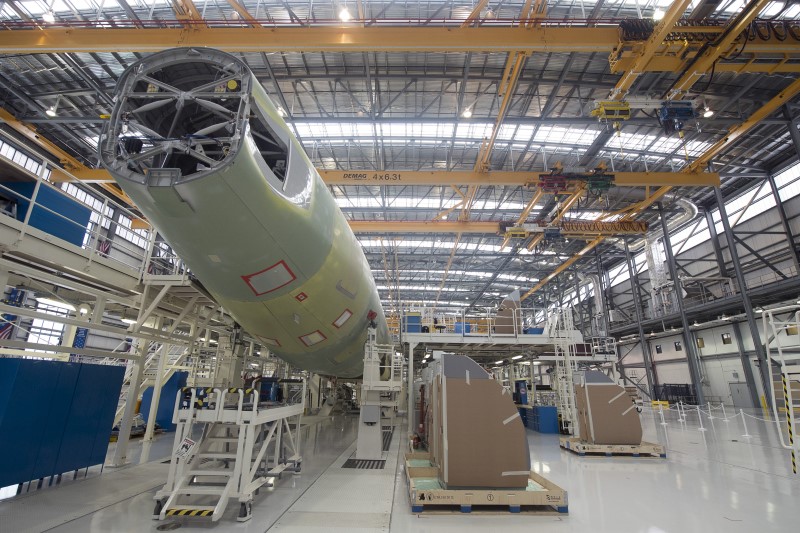By Lucia Mutikani
WASHINGTON (Reuters) - New orders for U.S. manufactured capital goods rose for a second straight month in July as demand for machinery and a range of other products picked up, offering a tentative sign that a business spending downturn was starting to ease.
The economy also got a boost from another report on Thursday showing an unexpected drop in the number of Americans filing for unemployment benefits last week.
The Commerce Department said non-defence capital goods orders excluding aircraft, a closely watched proxy for business spending plans, increased 1.6 percent last month, the largest gain since January.
These so-called core capital goods orders advanced 0.5 percent in June. July's rise marked the first back-to-back gain since January 2015. Economists polled by Reuters had forecast core capital goods orders rising only 0.3 percent last month.
Prices for U.S. Treasuries fell after the data, while U.S. stock futures pared losses. The dollar edged up against the euro and yen.
Business spending has contracted since the fourth quarter of 2015, in part as companies slashed capital spending budgets in response to lower oil prices.
The increase in core capital goods orders follows a rise in oil and gas drilling activity in recent months.
Still, business investment is likely to be tepid in the third quarter amid uncertainty over the global economy after Britain's decision to leave the European Union and ahead of the Nov. 8 U.S. presidential election, economists say. Heavy machinery maker Caterpillar last month lowered its 2016 forecast, citing sluggish demand in mining and other industries. Weak business spending contributed to holding down economic growth to 1.0 percent in the first half of 2016.
SHIPMENTS STILL WEAK
Shipments of core capital goods, which are used to calculate equipment spending in the government's gross domestic product measurement, fell 0.4 percent last month after decreasing 0.5 percent in June.
But labour market strength should support consumer spending and cushion the blow on the economy from weak business investment. Economic growth is expected to pick up in the third quarter.
In a separate report on Thursday, initial claims for state unemployment benefits slipped 1,000 to a seasonally adjusted 261,000 for the week ended Aug. 20. It was the third straight weekly decline in claims.
Economists had forecast first-time applications for jobless benefits rising to 265,000 in the latest week. Claims have now been below 300,000, a threshold associated with a strong labour market, for 77 straight weeks. That is the longest such stretch since 1973, when the labour market was much smaller.
A 10.5 percent jump in demand for transportation equipment lifted overall orders for durable goods, items ranging from toasters to aircraft that are meant to last three years or more, by 4.4 percent last month. That followed a downwardly revised 4.2 percent drop in June.
Durable goods orders were previously reported to have declined 3.9 percent in June. Civilian aircraft orders surged 89.9 percent in July, but demand for automobiles was flat.

In July, there were hefty increases in orders for machinery, primary metals, fabricated metal products, computers and electronic products, as well as electrical equipment, appliances and components.